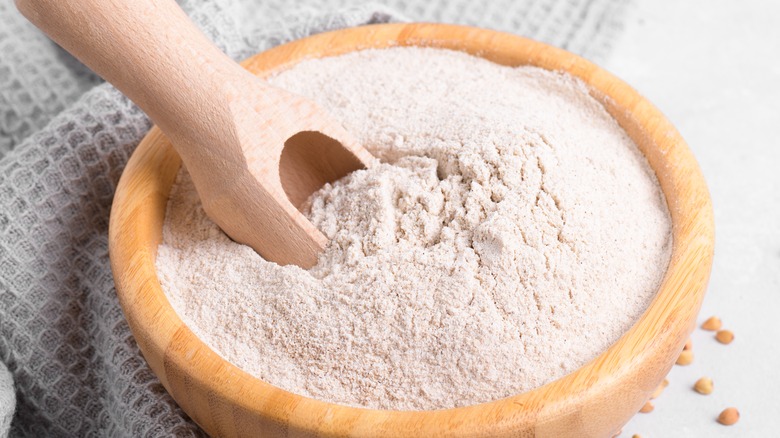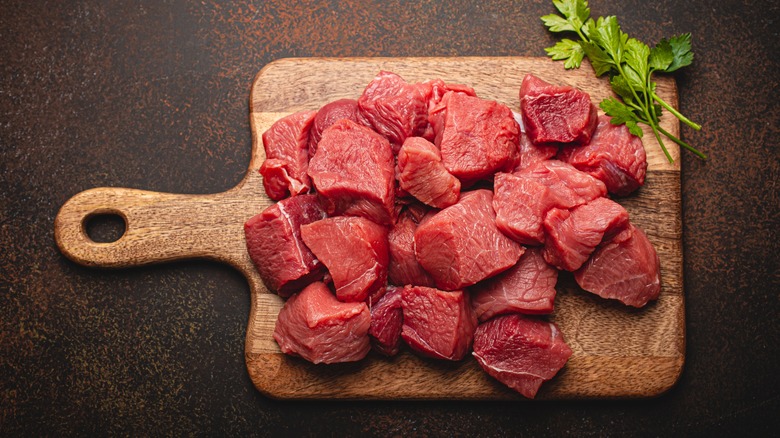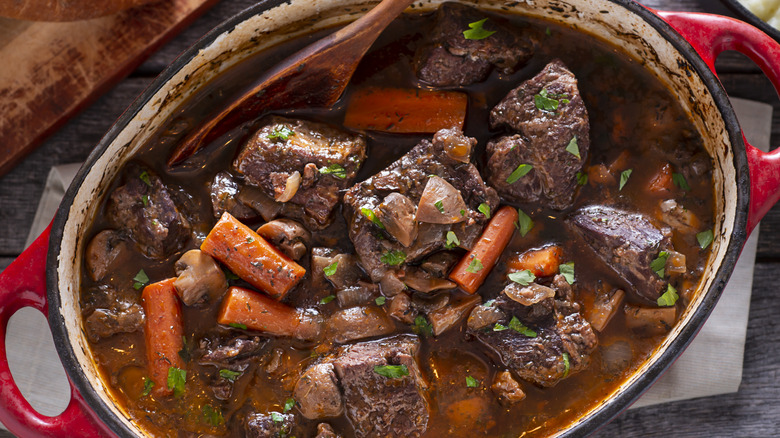How Much Flour To Use For Perfectly Browned Stew Meat
A comforting bowl of flavorful beef stew is like a warm hug on a cold winter day. It should be filled with hearty vegetables, a rich broth, and, of course, perfectly browned stew meat. The key to a stew that is full of flavor as well as just the right consistency is, surprisingly, flour. The cubes of beef need to be dredged in flour before browning in the pan for the perfect result. As a bonus, this flour also helps thicken the whole thing as well.
However, how is a home cook to know what is the correct amount of flour to use when dredging meat? Celebrity chef Andrew Zimmern has offered a cooking tip for his go-to measurement. He suggests as a rule of thumb to budget about one cup of flour for every pound of meat used in a dish. To properly dredge, add this amount of flour to a large, shallow dish and then toss each piece of stew meat in, thoroughly coating on all sides, and shaking off any excess.
Why flour helps brown stew meat
Most recipes for beef stew will first call for this step — where the pieces of stew meat are dredged in seasoned flour before being added to a hot pan. This affects the recipe in a few ways. The flour adds a protective layer to the delicate meat so it isn't destroyed by the high heat in the pan. Also, the flour helps brown the meat because of its starch content. This starch will caramelize quickly in the moment the meat hits the searing hot pan, ultimately resulting in a beautifully browned crust on the surface. This color will become the first building block of flavor for the final dish.
It is also important to season the dredging flour generously to get the best results. The flour acts as a binder to help attach seasoning to the meat and thus starts to build flavor in the dish from the very beginning. Just be sure to brown the cubes in batches to avoid overcrowding the pan. This will ensure the everything can brown evenly and not steam.
Flour also thickens the stew
After the meat is browned in the hot pan with oil, there will be bits of flour left behind. These delicious gems at the bottom of the pan are called fond and they are the secret to a perfect pot of stew as you proceed with the rest of the recipe. Eventually these browned bits will deglaze from the bottom of the pan and not only add deeper flavor to the final dish, but they will thicken the stew as well. When flour combines with fat (in this case the cooking oil or rendered fat from the beef), it creates a flavorful roux that acts as a thickening agent.
By heeding the tip of using a generous amount of flour from the very beginning, there's no fear of a thin or weak broth in your final dish. Ultimately, beef stew should be a delectable stick to your ribs meal in a bowl where each bite is coated in a rich and flavorful sauce.



